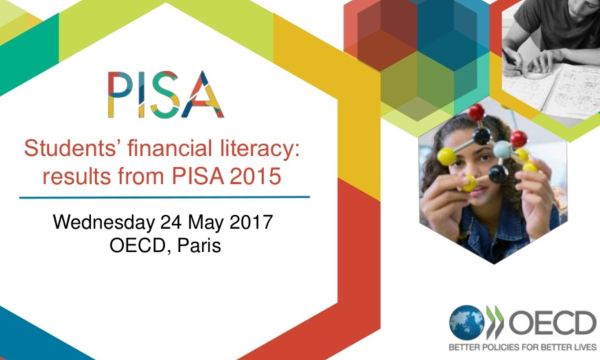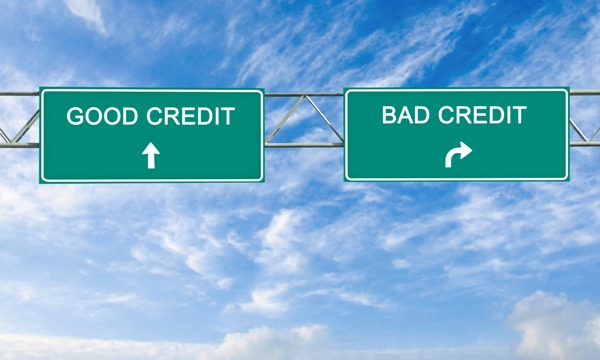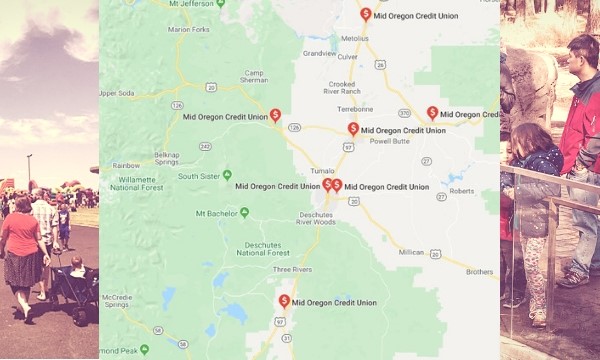One in five U.S. Teens Lack Basic Financial Literacy Skills
6/8/2017 Post by: NEFE (National Endowment for Financial Education)
American Students Struggle to Demonstrate Financial Capability on International Stage
One in five U.S. teenagers (22 percent) lack basic financial literacy skills according to the Program for International Student Assessment (PISA) findings released last month. Among 15 participating countries and economies, U.S. 15-year-olds ranked 7th in aptitude for understanding essential financial concepts, products and risks.
The average scores among U.S. teens were unchanged from results of a similar assessment in 2012. PISA is coordinated by the Organization for Economic Cooperation and Development (OECD), an assembly of governments from 35 member countries.
About PISA
The Program for International Student Assessment (PISA) is a triennial international survey which aims to evaluate education systems worldwide by testing the skills and knowledge of 15-year-old students in science, reading, mathematics and financial literacy. Around 53,000 students were assessed in financial literacy, representing about 12 million 15-year-olds in the schools of the 15 participating countries.
The 2015 assessment covers 15 countries and economies: Australia, the Flemish Community of Belgium, Brazil, seven provinces in Canada (British Columbia, Manitoba, New Brunswick, Newfoundland and Labrador, Nova Scotia, Ontario and Prince Edward Island), Chile, four provinces in China (Beijing, Shanghai, Jiangsu and Guangdong), Italy, Lithuania, the Netherlands, Poland, Peru, the Russian Federation, the Slovak Republic, Spain and the United States.
For more information, visit http://www.oecd.org/pisa/aboutpisa/.
PISA Findings
“The initial release of PISA findings (2012) revealed American teens were completely average when it comes to demonstrating a strong knowledge of financial skills. That measurement gave us a baseline to see room for growth or decline. It’s concerning with these latest findings to see that we haven’t moved the needle, and we still have significant work to do to provide meaningful access to teaching youth about money,” says Billy Hensley, Ph.D., senior director of education with the National Endowment for Financial Education® (NEFE®).
The latest PISA release finds only about one in 10 students in the U.S. achieved the highest proficiency level as a top performer, defined by the report as students who can look ahead to solve financial problems or make the kinds of financial decisions that will be relevant to them in the future. The average score among U.S. teens was not different than the OECD average.
China, Belgium & Canada Top 3 Countries Surveyed
China ranked number one overall, followed by Belgium and Canada. Chile, Brazil and Peru ranked as the bottom three. Eight countries — including the U.S. — participated in the 2012 and 2015 PISA financial literacy assessment. The Russian Federation and Italy showed measurable gains in average scores, while Poland, the Slovak Republic, Australia and Spain showed measurable declines.
“It’s clear that we need a better national strategy to teach youth. There are random acts of success with states who are doing it well. But as a country, we need to have a clear set of standards for providing well-thought-out financial education that is relevant and establishes positive behaviors,” says Hensley. “Additionally we need to continue to train educators to effectively deliver financial education and ensure that we are meeting the needs of Americans from all socio-economic backgrounds.”
The PISA study reports just 3 percent of U.S. students from lower-income schools were high performers, compared to 45 percent of students from higher-income schools. Among the low performers, 38 percent of students were from lower-income schools, compared to 16 percent from higher-income schools.
Financial Education Taught In School?
“Parents shouldn’t assume kids are being afforded this education in schools. We need to have regular, meaningful interactions to teach our children the fundamentals of money,” adds Hensley. “A great starting place is to get your child involved with a bank or credit union by having an account and learning to manage it during their teenage years.”
Among students who participated in the PISA study, 53 percent report that they have a bank account, which is an important distinction, as students with a bank account scored on average 42 points higher than those students who do not have a bank account.
To view the complete PISA report, visit http://www.oecd.org/finance/launch-pisa-financial-literacy-students-2017.htm





